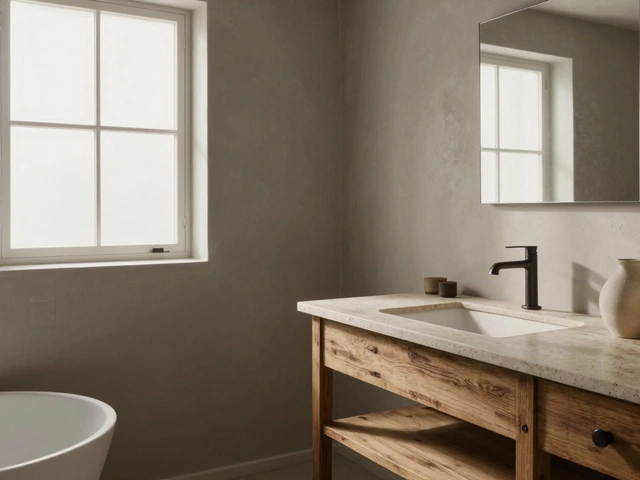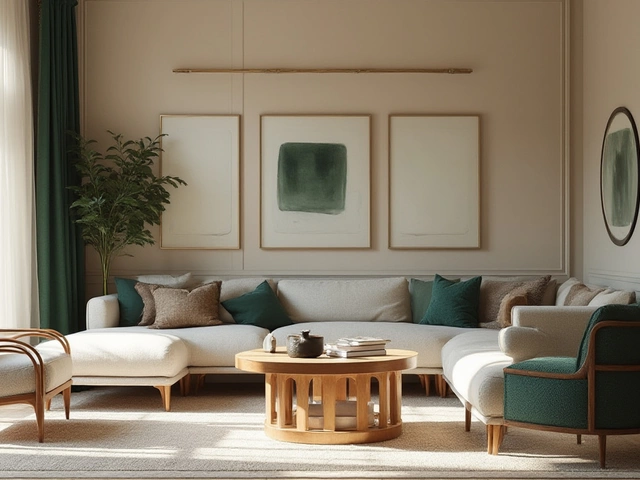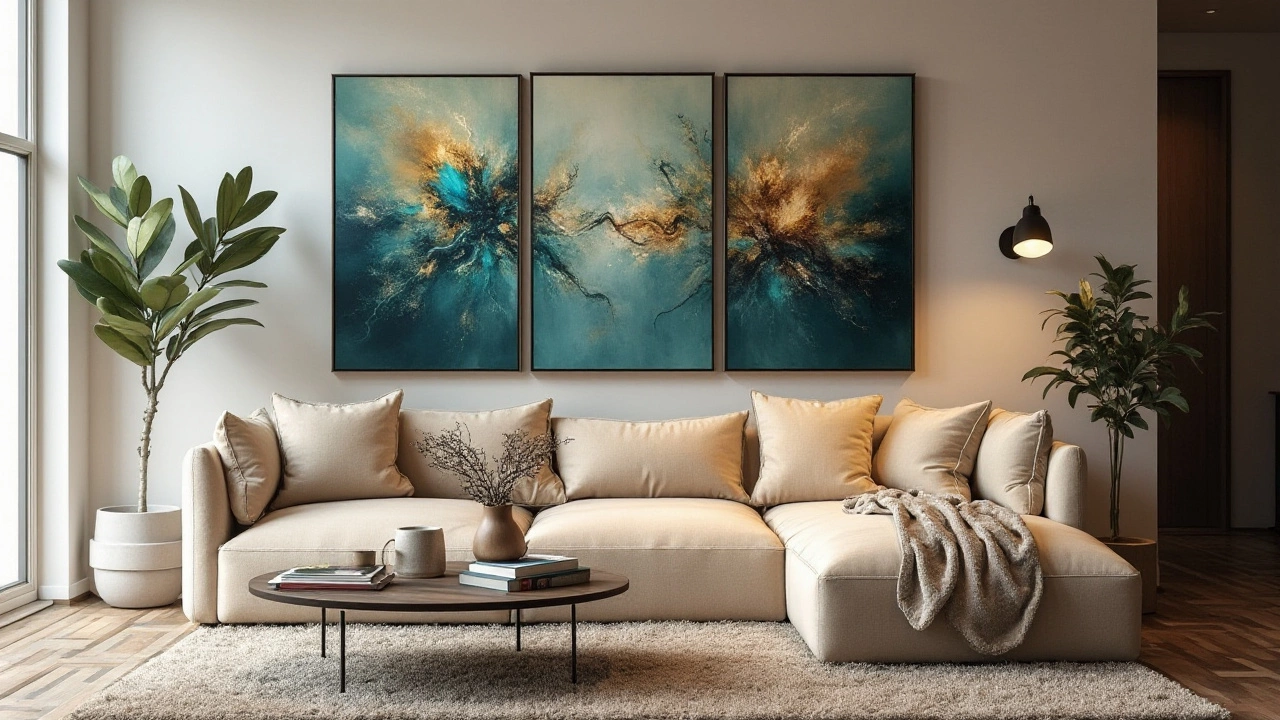
When it comes to decorating your living space, nothing adds a splash of personality quite like art. One form that's making waves in the world of wall art is the quintych, a unique arrangement of five distinct panels or canvases. Unlike traditional artwork, quintychs offer a more dynamic and engaging visual experience, captivating the viewer's attention in a whole new way.
The concept may sound modern, but it has roots that trace back to classical art techniques. Over time, artists have embraced this layout to enhance storytelling through their pieces. As homes and offices strive to create more engaging environments, the quintych provides a fresh take on wall decor that not only stands out but also easily adapts to varying interior styles.
- Origins and Historical Context
- Quintych vs. Other Art Forms
- The Appeal of Quintych in Modern Decor
- Choosing the Perfect Quintych for Your Space
- Installation Tips and Tricks
- Caring for Your Quintych Art Collection
Origins and Historical Context
The quintych, a form of artwork split into five distinct panels or sections, has a fascinating history that dates back well before it entered the mainstream of modern decor. Its origins can be traced to the altarpieces of medieval churches, where multi-panel arrangements, known as polyptychs, were commonly used to convey religious stories and iconography more dynamically. These early iterations often featured hinged panels allowing for movable, interactive storytelling long before the age of digital media.
One of the most iconic uses of multi-panel art is in religious settings of both Western and Eastern cultures. In fact, some of the grandest cathedrals in Europe boast elaborate polyptych altarpieces. Enthusiasts of sacred art might be familiar with the Ghent Altarpiece by Jan van Eyck—a masterwork with multiple panels bringing complex theological narratives to life in one sweeping vision. If we observe Asian art, similar multipart arrangements can also be found, such as in Japanese screen paintings, although they adhere to different themes and stylistic techniques.
Given that the quintych format is an adaptation of the more ancient and grand polyptychs, it illustrates how art evolves to meet contemporary tastes while still echoing ancient cultural motifs. In more recent centuries, the technique of breaking larger pieces into smaller, interconnected fragments granted artists expanded storytelling and spatial composition possibilities. Allowing the artist to craft individual elements with distinct narratives, this format creates a cohesive whole when viewed together, much like chapters in a novel. Not every piece has to tell its own story; instead, it can contribute to the broader narrative being depicted.
The versatility of the quintych is evident in its seamless integration into home decor, where its origins in ecclesiastical and courtly art have transitioned into modern spaces. The use of this approach in the home might be relatively new, but its impact is grounded in centuries of world art history. Travelers in time would see quintych-inspired designs adorning walls in everything from medieval castle rooms to contemporary urban lofts.
A noted art historian, Sarah Greenstein, wrote, “The quintych does not merely divide space; it expands the narrative possibilities of put-together artwork, simultaneously inviting fragmentation and cohesion.”
In essence, adopting a quintych-style piece into one's living space is like bringing a piece of that rich, evolving art heritage right into modern life. As homes and public spaces continue to embrace these multi-panel artworks, the quintych holds its place as an ever-evolving canvas, echoing a past where art was integrally tied to all facets of life.
Quintych vs. Other Art Forms
The world of wall art is rich with diversity, ranging from the classic framed painting to contemporary digital installations. Each form of art provides unique opportunities for self-expression and aesthetic achievement. Among the various styles, the quintych stands out, largely because of its five-part composition. This style is not only distinctive but also highly versatile, allowing artists to explore themes and narratives through a series of interconnected panels.
Unlike single-frame artworks, which tend to focus on a singular theme or subject, quintychs provide a panoramic view into an artist's vision. Each panel contributes its chapter to the overarching story, which can range from abstract ideas to detailed landscapes. Comparatively, diptychs and triptychs, which are composed of two and three panels, respectively, offer similar narrative potential but with fewer segments, limiting the amount of detail or diversity an artist can inject into each piece.
This expanded format also allows artists to experiment with color, texture, and form in ways that aren't feasible with a single canvas. For example, a quintych may utilize different color palettes across each panel to represent the transition of time or convey emotional shifts in a given subject matter. One famous example comes from the work of contemporary artist Dorothy Arnold, who used the quintych format to explore the five stages of grief, a concept that was beautifully articulated through a gradual change in hues and abstract forms across the series.
"The quintych format revolutionizes storytelling in art, allowing for a detailed exploration that is as dynamic as life itself." – Art Historian Michael T. Sanders
In terms of placement and decor, quintychs present a distinguished advantage. They fill larger wall spaces more naturally than their single-pane counterparts, creating a cohesive and impactful statement piece. This feature makes them ideal for large living rooms, modern office spaces, or expansive galleries seeking a singular but comprehensive focal point. As opposed to scattered art forms that require a meticulous arrangement to create balance and harmony, a quintych naturally brings a sense of unity and completeness due to its interconnected panels.
The increasing popularity of the quintych can also be attributed to its adaptability within varying interior designs. Whereas some wall art forms may require specific themes or motifs to integrate seamlessly, arranging a quintych offers flexibility through its multi-panel nature. Homeowners can experiment with gap distances between panels, rotate panels to refresh a space, or even change their hanging order over time. This versatility allows them to adapt to evolving tastes without the need to invest in new artwork. This element of changeability and reconfiguration is yet another distinguishing factor that sets the quintych apart from traditional single-canvas art forms.
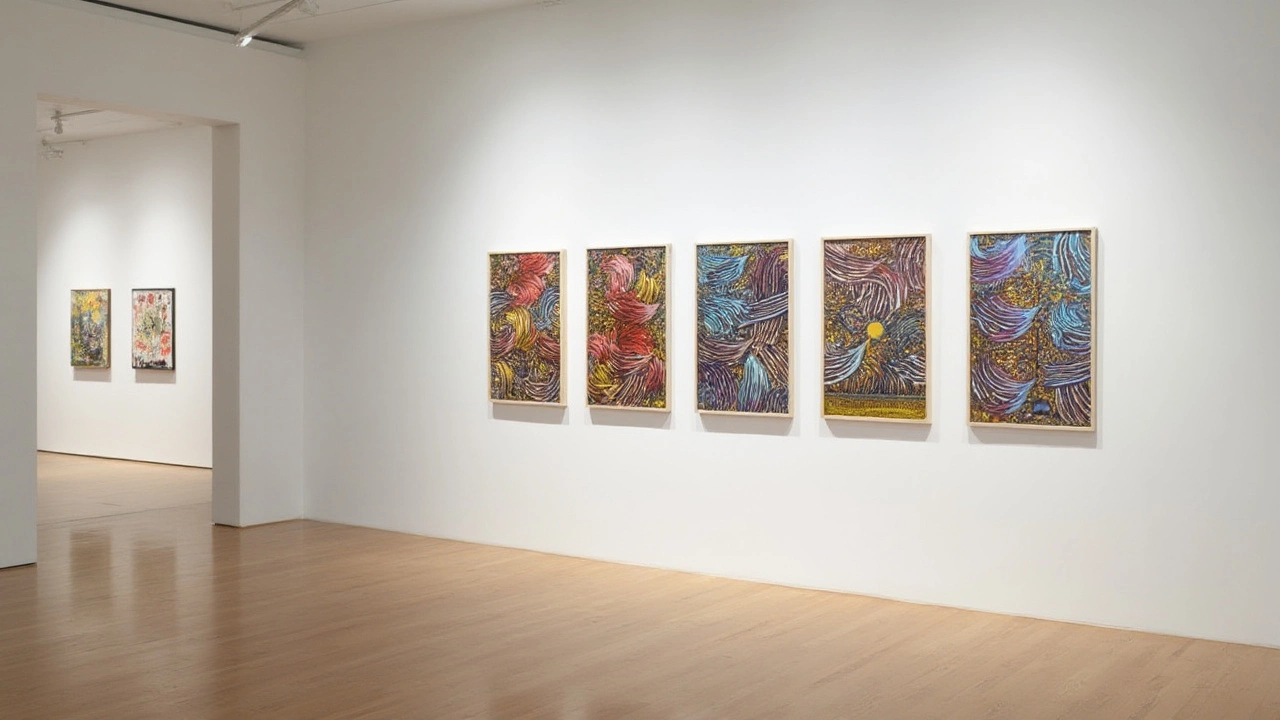
The Appeal of Quintych in Modern Decor
The quintych art form is captivating modern interior designers and homeowners alike, offering a versatile approach that breaks the monotony of traditional wall hangings. These five-panel compositions are more than just a visual treat; they are a dance of colors and themes that can transform any space into a living gallery. As people spend more time at home, the demand for unique and engaging interior elements has surged, catapulting the quintych into the spotlight. The layout of a quintych can cater to a range of tastes, from minimalist to extravagant, satisfying the whims of eclectic art enthusiasts while lending itself well to the subtle beauty sought by design minimalists. The multiplicity that a quintych presents creates an artistic rhythm that infuses life into the room, highlighting its appeal in modern decor.
Another reason for its rising popularity is its ability to narrate a story across its panels. Traditionally, art came in singular pieces, requiring viewers to interpret the artist’s message from a single frame. With a quintych, artists have the freedom to unfold a tale in five parts, encouraging observers to engage more deeply with the artwork. This multi-faceted approach allows quintych to serve as a natural conversation starter, inviting guests to explore its narrative. Moreover, quintych artworks can span themes, transitions, or color palettes across panels, making them a harmonious choice for expansive walls where singular artwork might appear lost or insignificant. The dynamic arrangement adds depth and dimension, stirring a sense of intrigue as the eyes move from one panel to the next.
The appeal further extends to the flexibility in customizing quintych art to suit diverse environments and preferences. For businesses, it becomes a statement piece in lobbies or conference rooms, often reflecting brand ethos or values through thoughtfully curated panel designs. In residential settings, a quintych can mirror personal journeys, with each panel symbolizing a milestone or sentiment. Interior designers cherish the quintych for this adaptability, allowing them to alter spatial perceptions, making large rooms feel cozy and smaller spaces appear more expansive. The spatial versatility appeals to modern decor sensibilities where functional art that tells a story is held in higher regard.
According to interior design experts, employing a quintych offers a freedom in layout not generally available with other art forms. Depending on the available wall space, the panels can be arranged linearly, depicting a continuous flow, or with intentional gaps, imparting a rhythm all its own. Jane Doe, a renowned art curator, once remarked, "The quintych breaks free from the traditional boundaries of art, providing a canvas that communicates in fragments but speaks with a unified voice."
An artist’s voice resonates differently when stretched across multiple panels, offering a richer, more interactive experience.It’s this allure that keeps the quintych a favored choice for those looking to deviate from conventional aesthetics.
The quintych's ability to blend seamlessly with modern decor lies in its inherent adaptability and engagement. Whether it is displayed in an open office layout or an intimate family room, it doesn’t just fill a room; it animates it. This capability in evoking both personal and shared experiences enhances its appeal in contemporary decor strategies, making quintych not just an art piece but an integral part of living spaces.
Looking at the growing interest in personalized art experiences, the quintych is poised for a bright future. Its innate capacity to evolve with the shifting paradigms of design trends puts it in a unique position. It’s not merely a trend, but a timeless convergence of art and emotion, telling tales through its segmented yet unified format. For those seeking to infuse their spaces with creativity and interaction, investing in quintych art is a decision that promises to pay stylistic dividends.
Choosing the Perfect Quintych for Your Space
Choosing a quintych for your home or office can feel as daunting as selecting a piece for a gallery, mainly due to the impact this unique wall art format can have on any space. Begin by considering the room's existing style and color scheme, as this is crucial to ensure the artwork complements rather than clashes with your decor. Understand the room's purpose—whether it's a cozy lounge, a formal dining area, or a dynamic office space. Each setting has its own atmosphere, and your choice of art should augment its intended vibe.
When shopping for a quintych, size is an essential factor. You want to make sure it fits organically on your wall without overwhelming the room or, conversely, seeming insignificant. A common guideline is to measure the wall and aim for your art to cover around 60% to 75% of the wall area. Additionally, consider the layout. Quintychs can be laid out in a straight line for a straightforward, symmetrical appearance or staggered for a more eclectic, artistic feel. This flexibility is what makes quintychs increasingly popular in modern home decor.
Material plays a significant role in the art's overall effect. Canvas quintychs convey a traditional touch, while framed panels can add sophistication. Metal finishes offer a contemporary flair, perfect for minimalist settings. Don't shy away from experimenting with different materials and textures to find the one that sings to your aesthetic sensibilities. According to renowned art consultant Julia Hickory, "A carefully selected quintych can transform a blank wall into a compelling narrative, enhancing the ambiance of any room."
Investing in a theme for your quintych can add layers of interest and make your art a focal conversation point. Nature-inspired quintychs exude tranquility and are perfect for creating a serene atmosphere. Abstract art might, however, add an element of drama and color. You might opt for historical or cultural themes if they resonate with you. Pay attention to the narrative you want your quintych to narrate, as this will guide you in terms of colors, figures, and arrangements featured in the panels.
In terms of cost, quintychs span a broad range, from readily affordable prints to more pricy, custom-made pieces. Whatever your budget, invest time in researching artists and styles that appeal to you. Marketplaces like Etsy and Saatchi Art can serve as excellent starting points for discovering both emerging and established artists who offer a diverse selection of quintychs.
Before making a final purchase decision, always request a preview of what the quintych will look like in your space, either through an in-person viewing or digital visualization tools. This step will help ensure that the scale, color, and theme of the art align harmoniously with your room. Ensuring it matches your vision can save you from costly mistakes, making sure the quintych truly enhances your environment.
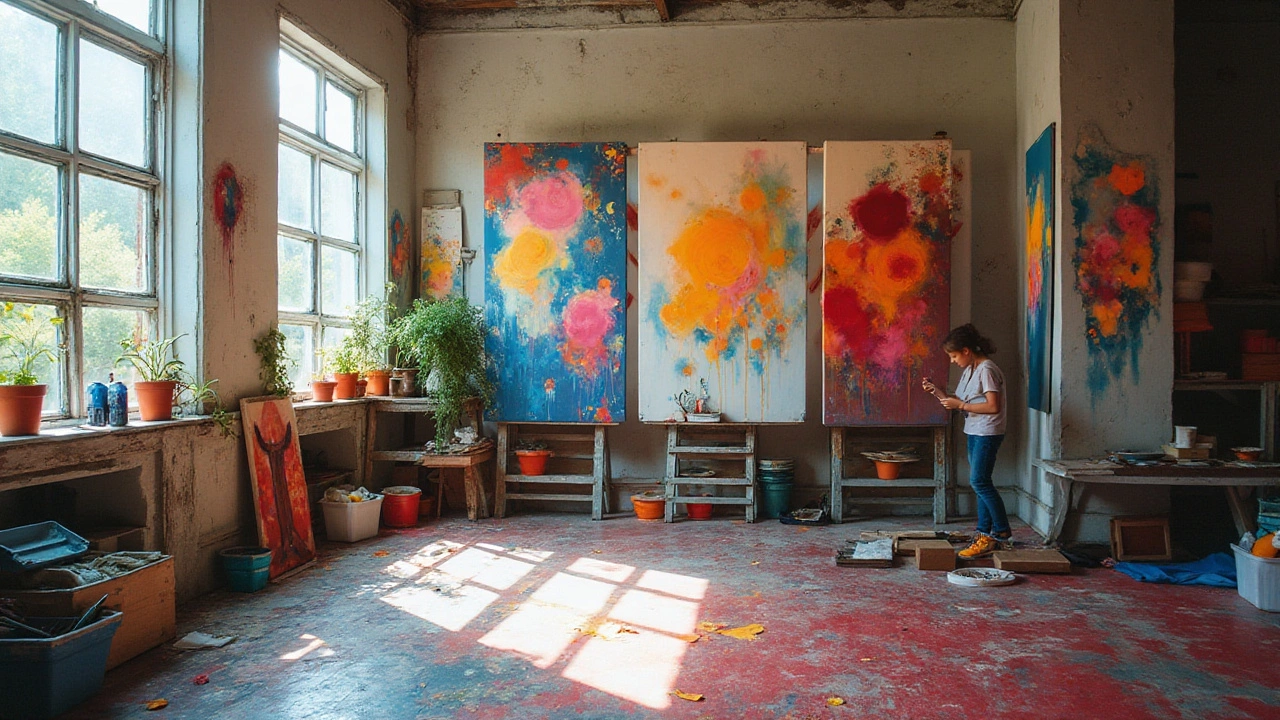
Installation Tips and Tricks
Installing a quintych can seem daunting at first, but with careful planning and a bit of patience, you'll have a stunning centerpiece that transforms your space. Start by considering the wall where you intend to hang this five-piece ensemble. Make sure it's unobstructed and has enough surface area to accommodate all panels while allowing a little breathing room around the edges. This ensures that each component can convey its portion of the story effectively without feeling cramped.
Measure the height at which you want the quintych to hang. A good rule of thumb is to position it at eye level, which is roughly 57 to 60 inches from the floor to the center of the middle panel. These measurements can, of course, vary based on personal preference or room height, so adjust accordingly. Use a measuring tape and a level to ensure precision, as these initial steps are crucial for achieving professional results. If available, a laser level can significantly ease the process, offering a guideline that's consistently straight across your wall.
Before drilling, lay out the panels on the floor to visualize the final arrangement. Use painter's tape to mark spots on the wall representing the edges of each piece. This trick enables you to adjust spacing and alignment up until the last moment. Quintychs often require evenly spaced gaps between panels, usually around 1 to 3 inches apart. However, the final decision should align with your aesthetic preferences and the wall's dimensions. Wall art like quintych is all about balance and harmony, so take time to ensure everything feels right before proceeding.
An important step that sometimes gets overlooked is selecting the right mounting hardware. The weight of the panels can vary, and you'll want to ensure secure attachments. Heavy-duty picture hangers or anchors are an excellent choice for larger pieces. For those conscious of preserving the wall's condition, consider adhesive strips designed for home decor. These modern-day marvels boast impressive weight limits and leave your walls unscathed upon removal.
"A well-instaled art piece not only elevates the room but speaks volumes about the dweller's personality," says Megan Haller, renowned art installation expert.
If you’re feeling tech-savvy, consider using a digital stud finder to locate the ideal spot for hanging each element of your quintych. Not to mention, splitting the display across several studs can help distribute the weight, preventing potential mishaps. Once you’ve drilled or adhered to your heart’s content, step back and squint slightly at your work, as this trick can offer a fresh perspective, highlighting subtle adjustments needed in alignment.
Finally, ambiance plays a significant role in enhancing art techniques like the quintych. Think about how lighting can accentuate your installation. Aim for indirect lighting that washes softly over the surface of your panels. Adjustable track lights or even sconces with dimming capabilities can double the visual impact of your quintych, adding depth and shadows that dance across its multi-panel surface. With these tips in hand, you are well on your way to creating a dramatic impression that captivates anyone who steps into your living space.
Caring for Your Quintych Art Collection
Owning a quintych is like owning a small piece of artistic genius, but it does demand some commitment when it comes to maintenance. First and foremost, the location you choose to display your quintych plays a crucial role in its longevity. Avoiding direct sunlight is imperative, as UV rays can cause colors to fade over time, especially if your art pieces incorporate delicate pigmentation. Position them in areas that have ambient or indirect lighting to preserve the vibrancy of the artwork.
Dust and pollutants are art's silent enemies. To combat these, ideally, develop a cleaning routine that is gentle but consistent. Use a soft, dry cloth to gently wipe each piece, ensuring not to scratch or smudge the surfaces, particularly if it's a canvas or has a textured finish. If your quintych is framed with glass, you might occasionally need to clean the glass, but it's vital to avoid spraying cleaner directly. Instead, spray onto a cloth first. If your art piece is particularly valuable or aged, consulting a professional conservator at least annually can ensure it remains in prime condition.
"Art is not what you see, but what you make others see," said Edgar Degas, emphasizing the viewer’s role in bringing art to life. So, keeping your quintych in pristine condition not only helps in maintaining its visual allure but also enriches the experience for anyone who views it.
If your display area experiences frequent temperature changes or humidity, these can pose risks to your art. High humidity can lead to mold or warping, especially in spaces near kitchens or bathrooms. Using dehumidifiers or climate control solutions in such areas can significantly protect your collection. Consistency in temperature is key, as sudden fluctuations may cause materials to expand and contract, leading to potential damage. Keeping the room at a moderate, stable climate allows for the preservation of the quintych’s structural integrity and color fidelity.
Finally, should your quintych require transportation or storage – whether for relocation or cleaning purposes – remember to take utmost care. Wrapping each panel individually in acid-free paper, followed by bubble wrap, can safeguard against scratches and impact. Proper labeling can help you reorganize the panels accurately when setting them back up. During storage, ensure the pieces are kept upright and away from potential hazards like pipes and windows where environmental factors could interfere.
For those truly passionate about home decor and {wall art}, ensuring the care of one's collection can be a rewarding endeavor. The little efforts in protecting your quintych not only preserve its beauty but also extend its life, allowing you to enjoy it for many years. With the proper attention, your art will continue to inspire and captivate as it graces the walls of your home or office.

